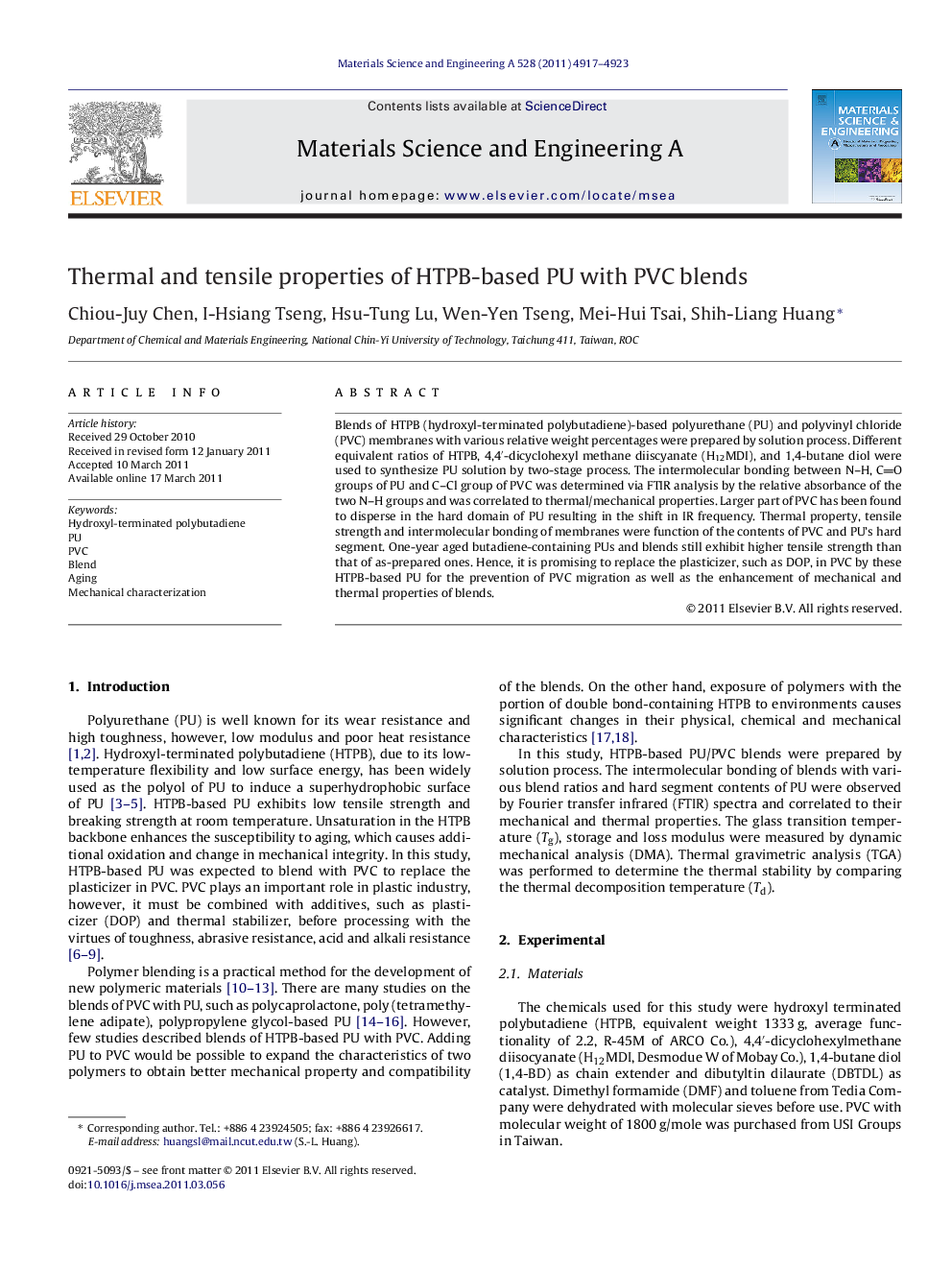| Article ID | Journal | Published Year | Pages | File Type |
|---|---|---|---|---|
| 1578862 | Materials Science and Engineering: A | 2011 | 7 Pages |
Blends of HTPB (hydroxyl-terminated polybutadiene)-based polyurethane (PU) and polyvinyl chloride (PVC) membranes with various relative weight percentages were prepared by solution process. Different equivalent ratios of HTPB, 4,4′-dicyclohexyl methane diiscyanate (H12MDI), and 1,4-butane diol were used to synthesize PU solution by two-stage process. The intermolecular bonding between N–H, CO groups of PU and C–Cl group of PVC was determined via FTIR analysis by the relative absorbance of the two N–H groups and was correlated to thermal/mechanical properties. Larger part of PVC has been found to disperse in the hard domain of PU resulting in the shift in IR frequency. Thermal property, tensile strength and intermolecular bonding of membranes were function of the contents of PVC and PU's hard segment. One-year aged butadiene-containing PUs and blends still exhibit higher tensile strength than that of as-prepared ones. Hence, it is promising to replace the plasticizer, such as DOP, in PVC by these HTPB-based PU for the prevention of PVC migration as well as the enhancement of mechanical and thermal properties of blends.
► Large amounts of PVC distribute in the hard domain of PU. ► The intermolecular bondings as well as the thermal and mechanical properties are enhanced due to the presence of PVC in PU. ► Aged butadiene-containing PU/PVC blends exhibit high tensile strength.
